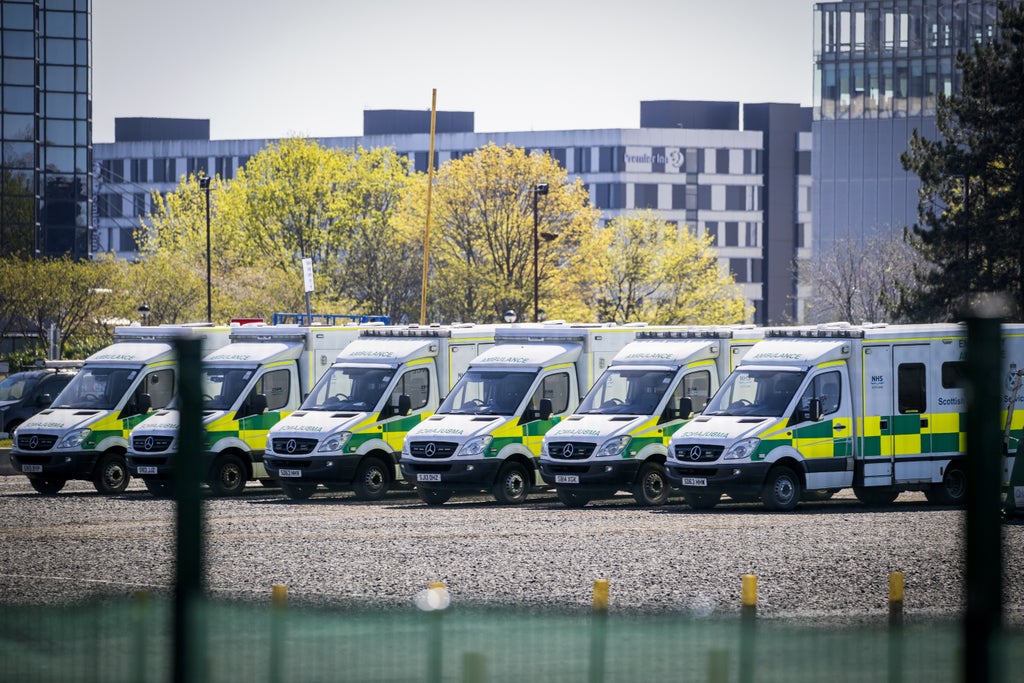
Scotland’s ambulance service is at “breaking point” as the number of emergency callers waiting more than two hours soars, the Scottish Conservatives have said.
It is likely the coronavirus pandemic has negatively impacted the service, but Scottish Conservative health spokesman and GP Sandesh Gulhane said the “out of control” waiting times predate Covid-19.
Freedom of information data, obtained by the Tories, revealed that 40,166 emergency callers waited more than 120 minutes for paramedics in 2021/22.
That is compared with around 17,300 in the the previous year, 14,800 in 2019/20 and just 4,438 in 2018/19.
Critically ill “red” or “purple” callers – including people suffering heart attacks and strokes – having to wait more than two hours has risen fivefold since 2018, the figures show.
The Scottish Ambulance Service (SAS) has an eight-minute target time for those considered “critically ill”.
These delays inevitably lead to more suffering for patients and ultimately, avoidable deaths
The Glasgow MSP said the service is “at breaking point”.
He said: “This shocking data exposes how ambulance wait times have been spiralling out of control since well before the pandemic.
“The SNP has been failing the NHS for years and even before Covid struck – and now our ambulance service is at breaking point.”
The total number of critically ill “red” and “purple” incidents waiting more than 10 minutes to be seen reached 46,656 in 2021-22 – accounting for 40% of all call-outs in the category.
These figures have increased by more than 50% since the previous year, with 30,651 waiting more than 10 minutes for emergency help.
Pre-pandemic, in 2018/19, some 21,857 emergency callers waited more than 10 minutes.
Dr Gulhane said the increase waiting times for an ambulance is resulting in “avoidable deaths”.
He added: “Slow turnaround times and record waits at A&E have left over 40,000 Scots, some of whom have been critically ill, waiting more than two hours for emergency help to arrive.

“These delays inevitably lead to more suffering for patients and ultimately, avoidable deaths.
“There is a reason the ambulance service aims to reach emergency patients within eight minutes. If these patients are waiting more than two hours, they will obviously come to harm or even die.
“If that was your loved one, you would rightly be horrified.
“This shameful state of affairs is symptomatic of the interconnected crises that have plagued our NHS for years under successive SNP health secretaries – but it cannot be allowed to continue.”
A Scottish Ambulance Service spokesperson said: “Our latest statistics show our median response time for our most serious calls across the country is currently six minutes 47 seconds and that 30-day survival rates for our most seriously ill patients are at their highest ever level.
“The response times quoted regarding purple and red calls relate to where calls have started as a lower call category, for example amber or yellow, and were then subsequently upgraded. Our aim is to continually reduce response times and we have recently recruited an extra 540 new frontline staff to help boost our capacity.”
A Scottish Government spokesperson said: “We are determined to ensure the Scottish Ambulance Service has the resources and skilled staff in place to continue to deliver a high quality service and patient safety remains our number one priority. The pandemic has been the biggest challenge the NHS has faced in its 73-year existence and has heaped pressure on our ambulance service and wider NHS.
“These figures demonstrate that while there are approximately the same number of incidents being responded to in 2021/22 compared to 2018/19, there has been a dramatic increase in the number of the most serious incidents. In fact, in four years the number of purple incidents responded to in under 10 minutes was up by over 70%, and the number responded to in under 30 minutes doubled.
“Our increased investment has seen record recruitment of 540 additional ambulance staff in 2021/22 with further recruitment of 574 staff planned for this year, ensuring the service is working as efficiently as possible. Staff cover levels have shown a sustained improvement over the last few weeks which has allowed SAS to step down from the highest level of their escalation plan.”







